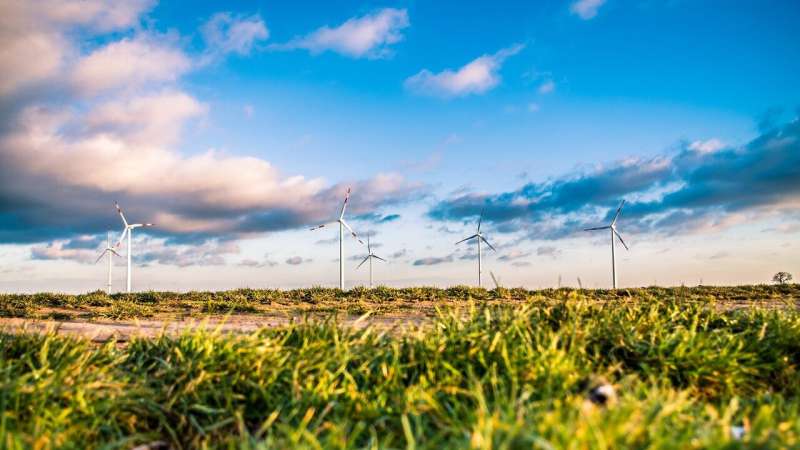How do smallholders transform to sustainable production in North China?

Smallholders are the main body of China's agricultural producers, numbering about 203 million, accounting for 98% of all kinds of agricultural production enterprises. They often invest excess resources in the production process, and the efficiency of their resource utilization is low, resulting in serious environmental impacts, such as air pollution, soil degradation, eutrophication, and resource scarcity.
Meanwhile, the environmental problems jeopardize the long-term sustainability of China's food production. There is an urgent need to transform smallholders production systems toward sustainable production in China, but this transition faces many challenges.
Smallholders cultivate on small scale of farmlands and the management is decentralized. At the same time, the rural population aging, the transfer of labor to secondary and tertiary industries, rising labor costs, and other factors bring great challenges to technology promotion. In addition, due to the regional resource endowment, great variations in climate and socio-economic circumstances exist among different regions, so localized strategy is very necessary, but it has not been effectively explored.
Associate Professor Minghao Zhuang and Professor Yingying Zheng from China Agricultural University, as well as their research teams, took the maize production in Hebei Province as a case study to explore the transition pathway of environmental-economic sustainability of smallholders production system in North China.
Using energy analysis, carbon footprint, nitrogen footprint, and cost-benefit analysis, this study comprehensively evaluated the status quo of county-level sustainability for maize production in 126 counties of Hebei, then explored the improvement potential by narrowing yield and nitrogen use efficiency gaps. The transition pathway for smallholders to achieve sustainable maize production was further discussed.
The study found that the average emergy sustainability index (ESI) of maize at 2.31 was relatively low; the average greenhouse gas (GHG) emissions and reactive nitrogen (Nr) losses were 0.15 g·kcal–1 CO2-eq and 3.75 mg·kcal–1 N, respectively; the average cost and net income were 12,700 and 4340 CNY·ha–1, respectively.
These results indicate a great potential to improve the environmental-economic sustainability of the maize production system of smallholders. The environmental and economic indicators exhibited obvious spatial heterogeneity among counties, indicating the necessity of localized optimization strategies for enhancing the environment-economy sustainability of maize production.
To determine the improvement potential of sustainability, the study simulated three scenarios. The first scenario (S1) was for all the farmland producing the highest 10% yield in each county; the second scenario (S2) was for highest 10% in crop N use efficiency at each county; the third scenario (S3) was for simultaneously highest 10% in both crop yield and N efficiency.
Based on the results of multiple scenario analysis, optimal strategies targeting each county were proposed. If each county adopts the optimal strategy, the average ESI and net income could increase by 32% and 83%, respectively, and the average GHG emissions and Nr losses reduce by 33% and 35%, respectively. These improvement potentials were higher than adopting same strategies.
The study also pointed out that, in the difficult quest for achieving sustainable agriculture for smallholders production systems, three aspects should be addressed: overall layout, technical innovations, and field demonstrations.
First, policy frameworks should be developed to cover the concerns about modernizing the basic rural operation system, socialized services systems for agriculture, talent cultivation, and technical innovations.
Second, technically, a green transition for agriculture can progress through three phases: optimize, replace, and redesign. The initial step is the optimization of resource use efficiency, mainly through adopting technologies like 4R technology, digital agriculture, soil testing and fertilizer recommendation, and so on. The replacement phase relies on substitute technologies. The redesign phase entails a complete reintegration of agricultural practices.
Third, the relationships among scientists, technology extension staff, and farmers need to be reconstructed, giving full play to the role of each subject, to form a replicable and popularized technology landing model, and ensure the implementation and promotion of technological innovation.
This study not only provides an important scientific references for adopting different strategies to achieve environment-economy sustainability for smallholders production systems with diverse landscapes in North China, but also has certain reference significance for countries facing similar challenges in the process of sustainable production for smallholders worldwide.
The research was published in Frontiers of Agricultural Science and Engineering.
More information: Minghao Zhuang et al, Toward sustainable maize production for smallholders through optimized strategies in north china, Frontiers of Agricultural Science and Engineering (2022). DOI: 10.15302/J-FASE-2022449
Provided by Higher Education Press





















